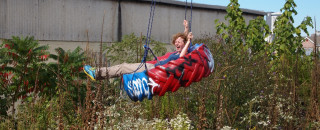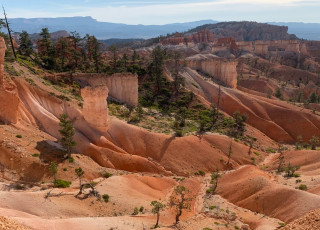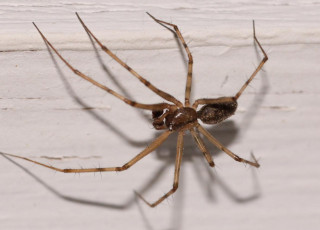Nature is Where You Find It
Emma Marris has a ball on a tire swing in an abandoned Philadelphia rail yard that has since grown over into a place of wilderness within the city. Credit: Emma Marrisley
By Riley Black
Nature truly is all around us. There’s no part of our lives that doesn’t touch our environment, locally and globally. You can find nature as far away as a national park or as close as the sidewalk. But perceiving and understanding how deeply we’re intertwined with nature has taken some adjustments to what we think “nature” is. Environmental writer Emma Marris has been part of the growing movement to challenge our expectations about what ecology means to us and what the nature of nature truly is.
The start, Marris says, came while reporting an ecology and conservation story for the scientific journal Nature. “I kept having conversations with ecologists about how there was no real prospect of putting many landscapes back the way they used to be hundreds of years ago, and about how expensive and how much active work it takes to stop ecosystems from changing in a changing climate and world,” Marris recalls. Nature as defined as “pristine wilderness” no longer existed. Even if a place is totally bounded off from direct human intrusion like drilling or even tourism, it is still touched and molded by human activities such as climate change. But rather than focus on loss, Marris says, “The alternative seemed to me to expand my definition of nature beyond just those places that were unchanged and unmanaged.”
Seeing this new picture sometimes takes literal reframing of traditional views. “I find myself taking pictures of landscapes and adjusting my angle so you can’t see the road or the people,” Marris says. It takes a moment to see that all these things are also part of nature. “A garden we plant is nature, too,” Marris adds.
Changing what nature means to us has real consequences. “Defining nature narrowly as only national parks and other places 'out there' makes it more likely that people who can't regularly access those places will feel like they have no relationship to nature,” Marris says. Feeling a lack of connection makes it all the more difficult to work together on global problems like plastic pollution and climate change. And while certain communities might be more insulated from these issues than others, the fact is that ecological problems will find their way to our doorstep. “Climate change isn’t just about starving polar bears or bleaching coral,” Marris says, noting that many people in coastal areas – especially in the tropics – will have to move or suffer negative impacts because of what people are doing half a world away. “In the words of a book about climate justice by Wen Stephenson,” Marris says, “’What We’re Fighting for Now is Each Other.’”
A different view of nature, and our relationship to it, offers hope. Human-caused changes are allowing animals, plants, and other organisms to move to new places and form novel interactions. Traditionally, these organisms have been called “invasive species” and put on the list for control or eradication. But there is another way to look at the same image. “If a new plant or bird shows up where I live, I don’t see that as an ‘invasive species’,” Marris says, ‘I see that as nature adapting to the changing climate. It is nature fighting back.” Questioning tradition is a step that can reveal what can still be saved, and what hope there still is for the future. At the close of her talk at the NHMU this week, Marris says, “I hope people will walk out of the auditorium with new eyes on, able to see the plants and animals that surround them every day, even in the city, as beautiful nature.
Marris was a speaker in NHMU's 2020 lecture series. Riley Black is the author of Skeleton Keys, My Beloved Brontosaurus, Prehistoric Predators, and a science writer for the Natural History Museum of Utah, a part of the University of Utah in Salt Lake City. Our mission is to illuminate the natural world and the place of humans within it. In addition to housing outstanding exhibits for the public, NHMU is a research museum. Learn more.



